Laxmikanth Summary: Panchayati Raj | Indian Polity for UPSC CSE PDF Download
The term "Panchayati Raj" in India refers to the system of rural local self-government, established across all states through state legislature acts. Its primary objective is to foster democracy at the grassroots level, focusing on rural development. The constitutionalization of Panchayati Raj occurred with the enactment of the 73rd Constitutional Amendment Act in 1992. In India's federal system, where powers are divided between the Centre and the states, the subject of 'local Government' is allocated to the states. Specifically, the fifth entry in the State List of the Seventh Schedule to the Constitution of India pertains to 'local government'.
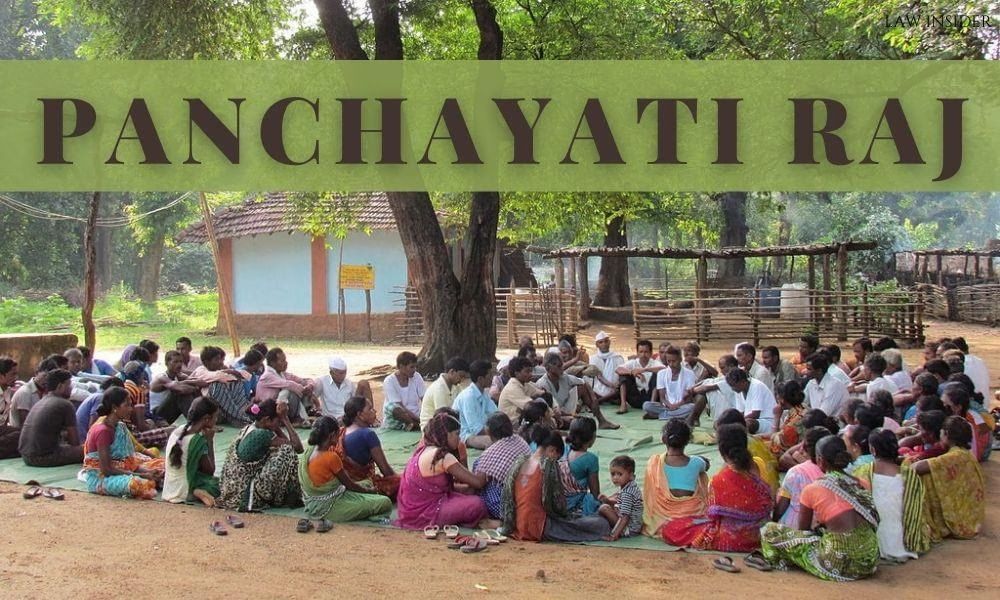
Evolution of Panchayati Raj
1. Balwant Rai Mehta Committee 1957
- In January 1957, the Indian Government formed the Balwantrai Mehta Committee to assess the Community Development Programme (1952) and the National Extension Service (1953).
- Chaired by Balwant Rai Mehta, the committee proposed the concept of 'democratic decentralization,' later known as Panchayati Raj.
- Key Recommendations:
- Implement a three-tier Panchayati Raj system: gram panchayat (village level), panchayat samiti (block level), and zila parishad (district level).
- Directly elect representatives for village panchayats; indirectly elect members for panchayat samiti and zila parishad.
- Entrust planning and development activities to these bodies.
- Designate panchayat samiti as the executive body and zila parishad as the advisory and coordinating body.
- District collector to serve as the chairman of Zila parishad.
- Ensure genuine transfer of power and responsibility to these democratic bodies.
- Transfer adequate resources for effective functioning.
- Evolve a system for future devolution of authority.
- The recommendations were accepted, leading to the establishment of Panchayati Raj. States were given flexibility in designing their patterns, with common principles.
- Rajasthan pioneered Panchayati Raj in 1959, followed by Andhra Pradesh. Most states adopted the system by the mid-1960s, but variations existed in the number of tiers, relative positions, functions, and finances.
- The National Development Council endorsed the committee's recommendations in January 1958, allowing states to adapt patterns suited to local conditions.
2. Study Teams and Committees
Since 1960, many study teams, committees and working groups have been appointed to examine the various aspects of the functioning of the Panchayati Raj system.
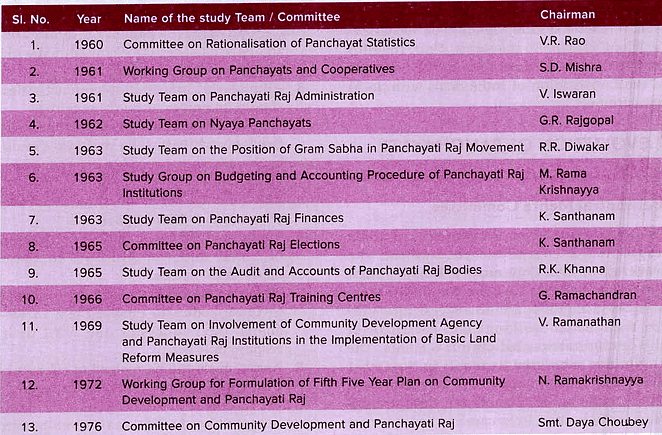
3. Ashok Mehta Committee
In December 1977, the Janata Government appointed a committee on panchayati raj institutions under the chairmanship of Ashok Mehta. It submitted its report in August 1978 and made 132 recommendations to revive and strengthen the declining panchayati raj system in the country. Its main recommendations were:
- Replace the existing three-tier system with a two-tier system: Zila Parishad at the district level and below it, Mandal Panchayat comprising a group of villages with a total population of 15,000 to 20,000.
- Decentralize power to the district as the first point of decentralization under popular supervision below the state level.
- Designate Zila Parishad as the executive body responsible for planning at the district level.
- Allow official participation of political parties at all levels of Panchayat elections.
- Grant compulsory taxation powers to Panchayati Raj institutions for mobilizing their financial resources.
- Introduce regular social audits by a district-level agency and a legislative committee to ensure funds allocated for vulnerable social and economic groups are effectively utilized.
- Prevent state government supersession of Panchayati Raj institutions, and if superseded, elections should be conducted within six months.
- Maintain Nyaya Panchayats as separate bodies from development Panchayats, presided over by a qualified judge.
- Entrust the Chief Electoral Officer of a state, in consultation with the Chief Election Commissioner, with organizing and conducting Panchayati Raj elections.
- Transfer development functions to Zila Parishad, placing all development staff under its control and supervision.
- Emphasize the role of voluntary agencies in mobilizing public support for Panchayati Raj.
- Advocate the appointment of a minister for Panchayati Raj in the state council of ministers to oversee Panchayati Raj affairs.
- Reserve seats for SCs and STs based on their population.
- Accord constitutional recognition to Panchayati Raj institutions to provide them with status, sanctity, stature, and assurance of continuous functioning.
4. G V K Rao Committee 1985
G.V.K. Rao Committee, formed in 1985, aimed to strengthen Panchayati Raj in India. Found that development processes were becoming bureaucratized, weakening the Panchayati Raj.
Recommendations made in 1986 to revitalize the Panchayati Raj system:
- District-Centric Approach: Zila Parishad at the district level should be crucial for planning and development.
- Empowerment of Panchayati Raj: Institutions at district and lower levels should have a significant role in planning and implementing rural development programs.
- Decentralized Planning: Some planning functions at the state level should be transferred to district-level planning units for effective decentralized planning.
- District Development Commissioner: Proposed creating this role to oversee all development departments at the district level.
- Regular Panchayat Elections: Emphasized the importance of conducting regular elections for Panchayati Raj institutions.
- Debureaucratization and Democratisation: Criticized bureaucratization of development administration and advocated for a shift towards democratisation.
- Local Planning Focus: Focused on a decentralized system with Panchayati Raj playing a leading role in local planning and development.
- Differentiation from Other Committees: Varied from earlier committees by assigning a more significant role to Panchayati Raj and reducing the developmental role of the District Collector.
- Addressing Weaknesses: Aimed to address the weakening of Panchayati Raj due to bureaucratization and proposed measures for effective functioning.
- Empowering Local Governance: Highlighted the importance of empowering Panchayati Raj for local planning and development, diverging from some earlier committee recommendations.
- District Collector's Role: Differs from other committees by recommending a reduction in the developmental role of the District Collector, stressing the importance of Panchayati Raj in development administration.
5. L M Singhvi Committee 1986
In 1986, the Rajiv Gandhi government appointed a committee under L.M. Singhvi to prepare a concept paper on the 'Revitalisation of Panchayati Raj Institutions for Democracy and Development.'
Recommendations made by the committee:
- Constitutional Recognition: Panchayati Raj institutions should be constitutionally recognized, protected, and preserved. Suggested adding a new chapter to the Indian Constitution for this purpose to ensure their identity and integrity.
- Constitutional Provisions: Recommended constitutional provisions to ensure regular, free, and fair elections to Panchayati Raj bodies.
- Nyaya Panchayats: Proposed the establishment of Nyaya Panchayats for a cluster of villages.
- Village Reorganization: Emphasized the need to reorganize villages to make Gram Panchayats more viable. Stressed the importance of the Gram Sabha as the embodiment of direct democracy.
- Increased Financial Resources: Advocated for providing more financial resources to Village Panchayats.
- Judicial Tribunals: Recommended the establishment of judicial tribunals in each state to adjudicate controversies related to elections, dissolution, and other matters concerning the functioning of Panchayati Raj institutions.
6. Thungon Committee 1988
In 1988, a sub-committee of the Consultative Committee of Parliament, chaired by P.K. Thungon, was formed to examine the political and administrative structure in the district for district planning.
Recommendations made by the committee for strengthening the Panchayati Raj system:
- Constitutional Recognition: Suggested constitutional recognition of Panchayati Raj bodies.
- Three-Tier System: Advocated for a three-tier system of Panchayati Raj with panchayats at the village, block, and district levels.
- Role of Zilla Parishad: Designated Zilla Parishad as the pivot of the Panchayati Raj system, responsible for planning and development at the district level.
- Fixed Tenure: Recommended a fixed tenure of five years for Panchayati Raj bodies.
- Supersession Period: Proposed a maximum period of six months for the supersession of a body.
- State-Level Planning Committee: Suggested the formation of a planning and coordination committee at the state level, chaired by the Minister for Planning, with the presidents of Zilla Parishads as members.
- Detailed List of Subjects: Called for the preparation of a detailed list of subjects for Panchayati Raj, to be incorporated into the Constitution.
- Reservation of Seats: Recommended reservation of seats in all three tiers based on population, with additional reservation for women.
- State Finance Commission: Proposed the establishment of a State Finance Commission in each state to lay down criteria and guidelines for financial devolution to Panchayati Raj institutions.
- Role of District Collector: Designated the District Collector as the chief executive officer of the Zilla Parishad.
7. Gadgil Committee 1988
In 1988, the Committee on Policy and Programmes, chaired by V.N. Gadgil, was constituted by the Congress party to explore ways to enhance the effectiveness of Panchayati Raj institutions.
Recommendations of the committee:
- Constitutional Status: Advocated conferring constitutional status on Panchayati Raj institutions.
- Three-Tier System: Proposed the implementation of a three-tier system of Panchayati Raj with panchayats at the village, block, and district levels.
- Fixed Term: Suggested fixing the term of Panchayati Raj institutions at five years.
- Direct Elections: Recommended direct elections for members of Panchayats at all three levels.
- Reservation: Called for reservation of seats for Scheduled Castes (SCs), Scheduled Tribes (STs), and women.
- Planning and Implementation: Assigned the responsibility of preparing and implementing plans for socio-economic development to Panchayat Raj bodies. Proposed specifying a list of subjects in the constitution for this purpose.
- Taxation Powers: Empowered Panchayati Raj bodies to levy, collect, and appropriate taxes and duties.
- State Finance Commission: Advocated the establishment of a State Finance Commission for the allocation of finances to Panchayats.
- State Election Commission: Recommended the establishment of a State Election Commission for the conduct of Panchayat elections.
These recommendations formed the basis for drafting an amendment bill aimed at conferring constitutional status and protection to Panchayati Raj institutions.
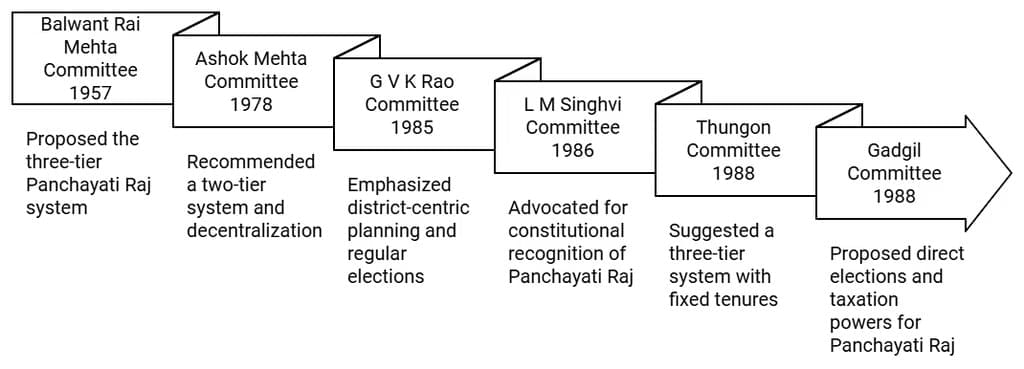 Evolution of Panchyati Raj
Evolution of Panchyati Raj
Constitutionalisation
Rajiv Gandhi Government (1989):
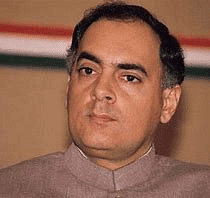
- Introduced the 64th Constitutional Amendment Bill in July 1989 to constitutionalize and empower Panchayati Raj institutions.
- Passed in Lok Sabha in August 1989 but faced vehement opposition in Rajya Sabha.
- Criticized by the Opposition for centralization in the federal system.
V.P. Singh Government (1989):
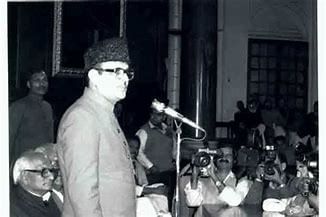
- National Front Government, led by V.P. Singh, aimed to strengthen Panchayati Raj institutions.
- A two-day conference of State Chief Ministers in June 1990 discussed the issues and approved proposals for a new constitutional amendment bill.
- Introduced a bill in September 1990, but it lapsed due to the fall of the government.
Narasimha Rao Government (1991):

- The Congress Government under P.V. Narasimha Rao revisited the constitutionalization of Panchayati Raj bodies.
- Modified proposals to eliminate controversial aspects.
- Introduced a constitutional amendment bill in September 1991.
- The bill eventually became the 73rd Constitutional Amendment Act, 1992, coming into force on April 24, 1993.
73rd Constitutional Amendment Act of 1992
Significance of The Act
- Added a new Part IX to the Constitution, titled 'The Panchayats,' covering Articles 243 to 243-O.
- Introduced the Eleventh Schedule, consisting of 29 functional items for panchayats, primarily dealt with in Article 243-G.
- Implemented Article 40 of the Constitution, part of the Directive Principles of State Policy, which emphasizes organizing village panchayats with powers for self-government.
- Granted constitutional status to Panchayati Raj institutions, making them part of the justiciable section of the Constitution.
- State governments are constitutionally obligated to adopt the new Panchayati Raj system outlined in the act.
- Formation of panchayats and holding elections are no longer at the discretion of the state government.
- The act's provisions can be categorized as compulsory and voluntary.
- Compulsory provisions must be included in state laws establishing the new Panchayati Raj system.
- Voluntary provisions offer flexibility to states, allowing consideration of local factors like geography, politics, and administration.
- Significantly contributes to the development of grassroots democratic institutions.
- Transforms representative democracy into participatory democracy, revolutionizing democracy at the grassroots level.
Salient Features of The Act
- Gram Sabha:
- Foundation of the Panchayati Raj system.
- Consists of all registered voters in a village Panchayat area.
- Exercises powers determined by the state legislature.
- Three-Tier System:
- Three levels: Village, Intermediate, and District.
- Uniform structure across the country, except for states with a population below 20 lakh.
- No mandatory intermediate level for such states.
- Elections:
- Direct election of all members at the village, intermediate, and district levels.
- Indirect election of chairpersons at the intermediate and district levels.
- State legislature determines the election process for village-level chairpersons.
- Members and chairpersons have the right to vote in Panchayat meetings.
- Reservations:
- Reservation of seats for Scheduled Castes (SCs), Scheduled Tribes (STs), and women.
- One-third of total seats and chairperson positions reserved for women.
- States can reserve seats for backward classes.
- Reservations for SCs and STs cease after 80 years (till 2030), with an exception for Arunachal Pradesh.
- Duration of Panchayats:
- Five-year term, but can be dissolved before completion.
- Elections must be held before the term expiry or within six months in case of dissolution.
- Panchayats reconstituted after dissolution serve the remaining period of the dissolved term.
- Disqualifications:
- Disqualifications determined by state laws.
- No disqualification for age below 25 if the individual is over 21.
- Disqualification matters referred to an authority determined by the state legislature.
- State Election Commission:
- Oversees electoral rolls and conducts Panchayat elections.
- Consists of a state election commissioner appointed by the governor.
- Similar removal process as a high court judge.
- Powers and Functions:
- State legislature endows Panchayats with self-government powers.
- Devolution of powers for economic development and social justice.
- Pertains to the 29 functional items listed in the Eleventh Schedule.
- Finances:
- Panchayats authorized to levy taxes, collect fees, and receive grants-in-aid.
- State legislature manages allocation, collection, and distribution of funds.
- Finance Commission reviews Panchayats' financial positions every five years.
- Audit of Accounts: State legislature governs maintenance and auditing of Panchayat accounts.
- Application to Union Territories: Provisions applicable to Union Territories with possible exceptions and modifications.
- Exempted States and Areas:
- Act does not apply to Nagaland, Meghalaya, and Mizoram, as well as specific tribal and hill areas.
- Parliament may extend provisions to these areas with specified conditions.
- Continuance of Existing Laws and Panchayats:
- Existing state laws on Panchayats continue until one year from the act's commencement.
- Panchayats existing before the act continue until their term ends unless dissolved earlier.
- Bar to Interference by Courts:
- Courts cannot interfere in Panchayat electoral matters.
- Validity of laws related to delimitation and seat allotment not challengeable in court.
- Election disputes handled through election petitions according to state legislature provisions.
- Eleventh Schedule: Contains 29 functional items within Panchayats' purview, including agriculture, education, health, and more.
Compulsory and Voluntary Provisions
Compulsory Provisions (Mandatory):
- Organization of Gram Sabha in a village or group of villages.
- Establishment of Panchayats at the village, intermediate, and district levels.
- Direct elections to all seats in Panchayats at the village, intermediate, and district levels.
- Indirect elections to the post of chairperson of Panchayats at the intermediate and district levels.
- Voting rights of the chairperson and other members of a Panchayat elected directly or indirectly.
- Minimum age of 21 for contesting elections to Panchayats.
- Reservation of seats (both members and chairpersons) for Scheduled Castes (SCs) and Scheduled Tribes (STs) in Panchayats at all three levels.
- Reservation of one-third of seats (both members and chairpersons) for women in Panchayats at all three levels.
- Fixing a tenure of five years for Panchayats at all levels and holding fresh elections within six months in the event of supersession of any Panchayat.
- Establishment of a State Election Commission for conducting elections to Panchayats.
- Constitution of a State Finance Commission every five years to review the financial position of the Panchayats.
Voluntary Provisions (Discretionary):
- Endowing the Gram Sabha with powers and functions at the village level.
- Determining the manner of election of the chairperson of the village Panchayat.
- Giving representation to the chairpersons of the village Panchayats in the intermediate Panchayats or, in the absence of intermediate Panchayats, in the district Panchayats.
- Giving representation to the chairpersons of the intermediate Panchayats in the district Panchayats.
- Giving representation to members of Parliament and state legislature in the Panchayats at different levels falling within their constituencies.
- Providing reservation of seats (both members and chairpersons) for backward classes in Panchayats at any level.
- Granting powers and authority to the Panchayats to function as institutions of self-government (autonomous bodies).
- Devolution of powers and responsibilities upon Panchayats to prepare plans for economic development and social justice, and to perform some or all of the 29 functions listed in the Eleventh Schedule of the Constitution.
- Granting financial powers to the Panchayats, authorizing them to levy, collect, and appropriate taxes, duties, tolls, and fees.
- Assigning to a Panchayat the taxes, duties, tolls, and fees levied and collected by the state government.
- Making grants-in-aid to the Panchayats from the consolidated fund of the state.
- Providing for the constitution of funds for crediting all moneys of the Panchayats.
PESA ACT OF 1996 (Extension Act)
The Panchayats (Extension to the Scheduled Areas) Act, 1996, commonly known as the PESA Act, was enacted to extend the provisions of Part IX of the Constitution related to Panchayats to the Scheduled Areas with certain modifications. Here are the objectives and features of the PESA Act:
Objectives of the PESA Act:

- Extend the provisions of Part IX of the Constitution relating to Panchayats to the Scheduled Areas with certain modifications.
- Provide self-rule for the majority of the tribal population.
- Establish village governance with participatory democracy, making the Gram Sabha a nucleus of all activities.
- Evolve an administrative framework consistent with traditional practices.
- Safeguard and preserve the traditions, customs, and cultural identity of tribal communities.
- Empower Panchayats at the appropriate levels with specific powers conducive to tribal requirements.
- Prevent Panchayats at higher levels from assuming the powers of Panchayats at lower levels.
Features (Provisions) of the PESA Act:
- State legislation on Panchayats in the Scheduled Areas should be in consonance with customary law, social and religious practices, and traditional management practices of community resources.
- A village shall consist of habitations managing affairs in accordance with traditions and customs.
- Every village shall have a Gram Sabha consisting of persons in the electoral rolls for the village-level Panchayat.
- Gram Sabha is competent to safeguard traditions, customs, cultural identity, community resources, and customary dispute resolution.
- Gram Sabha approves plans, programs, and projects for social and economic development and identifies beneficiaries under poverty alleviation programs.
- Panchayat at the village level must obtain certification of fund utilization from Gram Sabha.
- Reservation of seats in Scheduled Areas proportionate to the population, with not less than one-half reserved for Scheduled Tribes; all Chairpersons' seats reserved for Scheduled Tribes.
- State government may nominate Scheduled Tribes without representation, not exceeding one-tenth of total members to be elected.
- Consultation with Gram Sabha or Panchayats before land acquisition or resettlement in Scheduled Areas; planning and implementation coordinated at the state level.
- Planning and management of minor water bodies entrusted to Panchayats at the appropriate level.
- Gram Sabha or Panchayats' recommendations mandatory for granting prospecting license or mining lease for minor minerals.
- Prior recommendations of Gram Sabha or Panchayats mandatory for granting concession for exploitation of minor minerals by auction.
- Specific powers for Panchayats, including enforcing prohibition, ownership of minor forest produce, control over land alienation, managing village markets, control over money lending, and control over social sectors.
- Safeguards to prevent Panchayats at higher levels from assuming powers of lower-level Panchayats or Gram Sabha.
- State Legislature to follow the pattern of the Sixth Schedule for administrative arrangements in Panchayats at district levels in Scheduled Areas.
- Any law inconsistent with the PESA Act ceases to be in force after one year, but existing Panchayats continue till the expiry of their term, unless dissolved by the State Legislature sooner.
Finances of Panchayati Raj
The Second Administrative Reforms Commission (ARC) of India (2005-2009) provided a summary of the sources of revenue for Panchayati Raj Institutions (PRIs) and highlighted financial challenges. Here are the key points from the summary:
- Sources of Revenue for Panchayats:
- Grants from the Union Government based on the recommendations of the Central Finance Commission.
- Devolution from the State Government based on the recommendations of the State Finance Commission.
- Loans/grants from the State Government.
- Programme-specific allocation under Centrally Sponsored Schemes and Additional Central Assistance.
- Internal Resource Generation, including tax and non-tax revenues.
- Fiscal Empowerment Challenges:
- Across the country, States have not given sufficient attention to the fiscal empowerment of Panchayats.
- Panchayats' resources are meagre, and even in progressive states like Kerala, Karnataka, and Tamil Nadu, they heavily depend on government grants.
- Internal resource generation at the Panchayat level is weak, partly due to a limited tax domain and Panchayats' reluctance in revenue collection.
- Panchayats heavily rely on grants from Union and State Governments, and a significant portion of grants is scheme-specific, limiting discretion and flexibility.
- State Governments are not enthusiastic about devolving funds to Panchayats due to their own fiscal constraints.
- In critical Eleventh Schedule matters like primary education, healthcare, water supply, sanitation, and minor irrigation, State Governments are directly responsible for implementation and expenditure.
- The overall situation creates a scenario where Panchayats have responsibilities but inadequate resources.
- Importance of Own Resource Generation:
- While the funds transferred from Union/State Governments are crucial, the PRIs' own resource generation is essential for their financial standing.
- Local taxation systems ensure people's involvement in the affairs of elected bodies and make institutions accountable to citizens.
- Gram Panchayats' Resource Collection:
- Gram Panchayats are in a comparatively better position in terms of own resource collection because they have a tax domain.
- Other tiers (intermediate and district Panchayats) depend mainly on tolls, fees, and non-tax revenue for internal resource generation.
- Taxation Powers of Panchayats:
- State Panchayati Raj Acts grant most taxation powers to Village Panchayats.
- The revenue domain of intermediate and District Panchayats is kept smaller and confined to secondary areas like ferry services, markets, water and conservancy services, registration of vehicles, cess on stamp duty, and others.
- Taxation Powers of Village Panchayats: Various taxes, duties, tolls, and fees fall under the jurisdiction of Village Panchayats, including property/house tax, profession tax, land tax/cess, taxes/tolls on vehicles, entertainment tax/fees, license fees, tax on non-agriculture land, fee on cattle registration, sanitation/drainage/conservancy tax, water rate/tax, lighting rate/tax, education cess, and tax on fairs and festivals.
Reasons for Ineffective Performance
Even after conferring the constitutional status and protection through the 73rd Amendment Act (1992), the performance of the Panchayati Raj Institutions (PRIs) has not been satisfactory and not up to the expected level.
- Lack of Adequate Devolution:
- Many states have not taken sufficient steps to devolve functions, funds, and functionaries (3Fs) to PRIs as mandated by the Constitution.
- State Finance Commissions (SFCs) have submitted recommendations, but implementation and ensuring fiscal viability have been lacking.
- Excessive Control by Bureaucracy:
- In some states, Gram Panchayats have been subordinated, leading Sarpanches to spend significant time seeking funds or technical approval from Block Offices.
- This excessive interaction with Block staff distorts the role of Sarpanches as elected representatives.
- Tied Nature of Funds: Funds allocated for specific schemes may not be suitable for all parts of a district, resulting in either the promotion of inappropriate activities or under-spending of funds.
- Overwhelming Dependency on Government Funding:
- Panchayats exhibit an overwhelming dependence on government funding, leading to a lack of resource mobilization at the local level.
- This dependency reduces the likelihood of people requesting social audits.
- Reluctance to Use Fiscal Powers:
- Although Gram Panchayats have the power to levy taxes on property, businesses, markets, fairs, and services, very few utilize this fiscal power.
- Panchayat heads often argue that levying taxes within their own constituency is challenging.
- Status of the Gram Sabha: Empowering Gram Sabhas could enhance transparency, accountability, and the involvement of marginalized sections, but State Acts often lack clarity on their powers and functioning.
- Creation of Parallel Bodies:
- Parallel Bodies (PBs) created for speedy implementation often fail to demonstrate improved accountability and efficiency.
- PBs can lead to issues like partisan politics, corruption, and elite capture, creating a disconnect with existing structures and demoralizing PRIs.
- Poor Infrastructure:
- Many Gram Panchayats lack basic infrastructure, including full-time secretaries and office buildings.
- The absence of databases for planning and monitoring further hampers their effectiveness.
- Limited Training and Awareness:
- Elected representatives of PRIs, many of whom are semi-literate or illiterate, often lack awareness of their roles, responsibilities, and relevant procedures.
- Inadequate training contributes to their inability to perform functions effectively.
Addressing these challenges requires a comprehensive approach, including effective devolution, reducing bureaucratic control, promoting fiscal autonomy, empowering Gram Sabhas, and enhancing infrastructure and training for elected representatives.
|
154 videos|994 docs|260 tests
|
FAQs on Laxmikanth Summary: Panchayati Raj - Indian Polity for UPSC CSE
| 1. What is the significance of the 73rd Constitutional Amendment Act of 1992 in the context of Panchayati Raj? |  |
| 2. What are the compulsory and voluntary provisions of the Panchayati Raj system as per the 73rd Amendment? |  |
| 3. What is the PESA Act of 1996 and how does it relate to Panchayati Raj? |  |
| 4. What are the financial challenges faced by Panchayati Raj institutions? |  |
| 5. What are the reasons for the ineffective performance of Panchayati Raj institutions in India? |  |

















